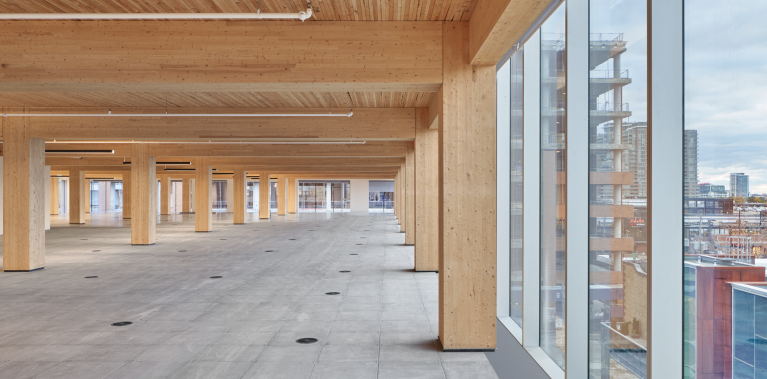Workers in the advanced wood building sector have the satisfaction of making a positive difference to our world by reducing the carbon footprint of the built environment. Harvested from sustainably managed forests, wood is the only renewable building material. By storing carbon, wood buildings help mitigate the effects of climate change.
In addition to the environmental benefits, advanced wood buildings can represent a more efficient, and industrialized, approach to construction. The construction sector is one of the least digitized major global industries. As such construction has not changed much in the last 100 years, leading to weak productivity growth compared to other major sectors. Advanced wood construction can change that by combining wood’s high strength, light-weight properties, and ease of processing with leading edge technologies such as BIM and robotic CNC machining. This enables prefabrication and modularized building processes to help improve productivities and reduce costs, construction schedules, and waste. Advanced wood buildings represent the future of construction, and not the past.
Jobs Across the Country
More than half Of the 50,800 new jobs openings in the advanced wood building sector between 2018 and 2028 will be concentrated in Ontario and Quebec. However, Alberta and British Columbia will generate more new jobs per capita than Ontario and Quebec—the sector will be growing more quickly in these provinces. For this reason, demand for workers in the sector will be similar across the four provinces.



























